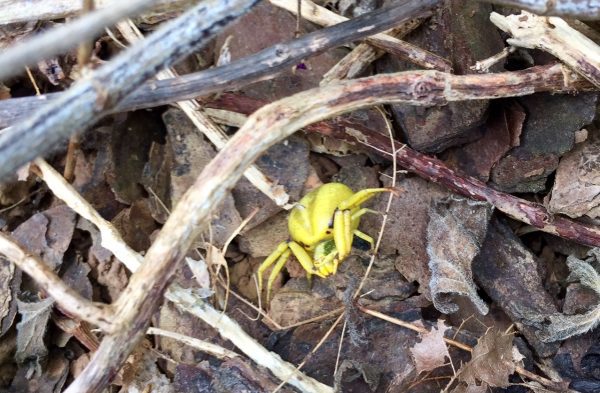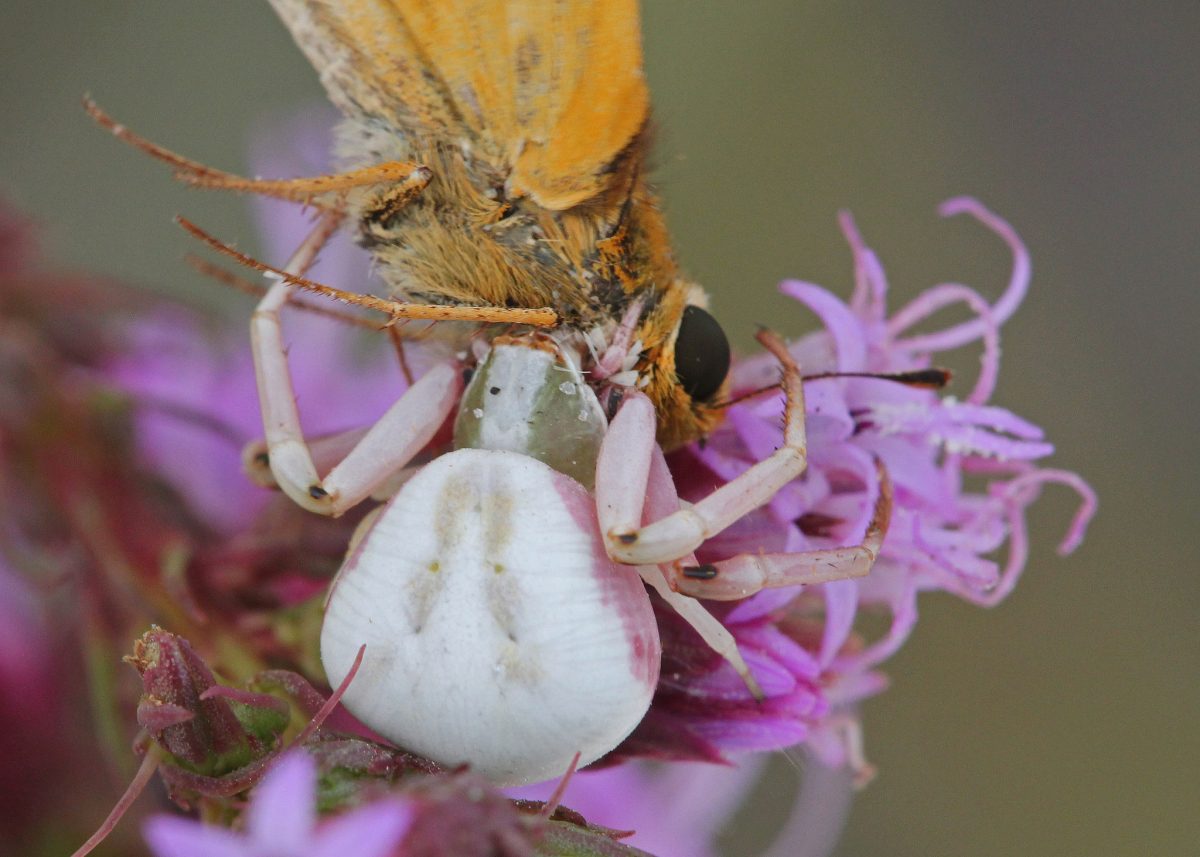A spider of a different color

With the arrival of fall, one of the most abundant wildflowers around is the yellow goldenrod. It is also one of the favorite hunting grounds of the unique crab spider (Misumena vatia), sometimes called the goldenrod crab spider. Although crab spiders occur all across the world, Misumena vatia is a Holarctic species, meaning it is found across the northern hemisphere. Crab spiders are also the most abundant of flower spiders.
They’re named crab spiders because that is what they look like – a crab, with a wide and flat body. The first two pairs of legs are larger than the rest and they keep them spread open for catching prey. Like crabs, they can walk sideways as well as forward and backward.
These spiders can be white or yellow depending on the color of the flower on which they are hunting. They also have the unusual ability to change color by secreting a yellow pigment into the outer cells of their bodies. The yellow pigment can also be excreted and removed if the spider spends time on a white plant. The change from white to yellow can take up to 25 days, and the change from yellow to white about six days.

Goldenrods attract a lot of insects—prey for the crab spider. The camouflage of the spider means it can expend more energy on reproduction because it does not have to spend much energy finding food or escaping from predators.
To catch prey, the crab spiders sit on the flower and wait for it to pass by, and they grab it and inject venom. Unlike other spiders they do not wrap their prey with silk but instead hold onto them while they suck their fluids. Because they have venom, they are able to eat invertebrates larger than themselves, including butterflies, bees, and wasps. Their bite is not dangerous to people, though.
Crab spiders are an annual spider, which means they die each year. Males mature earlier and mate and die. Females will live until they lay their eggs and guard them until cold weather. Females fold over the tip of a leaf and use a web to attach it, creating a pocket in which to lay eggs. Milkweed is a favorite host plant. The eggs hatch approximately three weeks later, and the young overwinter and mature the next spring or summer.
The next time you find yourself in a field of daisies, sunflowers or goldenrods, keep your eyes out for the crab spider. They are another example of how nature creates interesting adaptations for a creature to fit its surroundings.